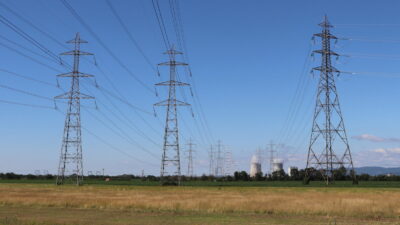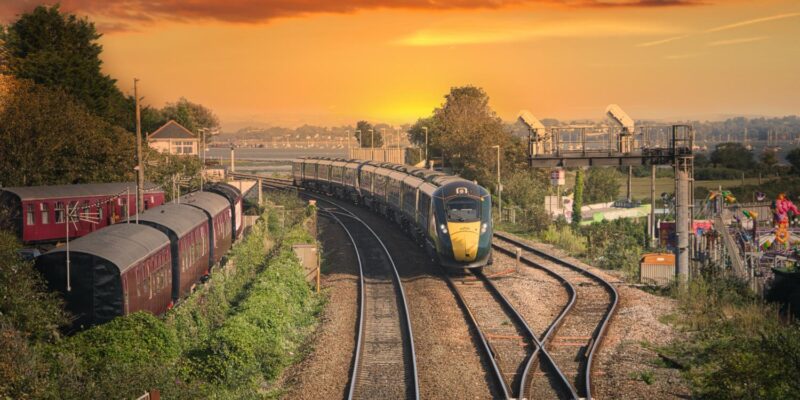‘Great’ British Railways?
On 20 May, the UK government published the Williams–Shapps Plan for Rail, which proposes the creation of a new rail body, ‘Great British Railways’. Katie-Lee English, Oxera Senior Consultant and former Head of Rail at HM Treasury, offers some initial thoughts on the proposals in the Report.
At long last! People in Great Britain can celebrate the publication of the eagerly anticipated Williams (ahem, ‘Williams–Shapps’) Review after nearly three years in the making.
And of course, this is now not just another rail Review to add to the mounting pile—this one is a Plan. So the question is: is it a good one?
The Plan sets out a vision for a single entity—‘Great British Railways’ (GBR)—that would run GB rail. The entity would subsume Network Rail and vast swathes of the Department for Transport’s rail functions, as well as operational elements of the Rail Delivery Group.1 The new body would then let concessions (‘Passenger Service Contracts’) to the private sector to operate parts of the network, with timetables, fares and most other aspects of the specification dictated by GBR or devolved bodies.
Two aspects are worth looking at in more detail from an initial review: first, the new commercial model for private operations; and second, the structure and governance of the sector.
The new commercial model
Let’s face it: what is the alternative right now? Asking franchisees to take on revenue risk under the old model was always a tall ask. It did wonders for their motivation to drive revenue and reduce costs (of delivering what was specified in contracts)—but, at the end of the day, these thinly capitalised entities were poorly placed to absorb the downside risk (not to mention the incentives to over-bid that are inherent in the auction model).2 And that meant franchise failures. Add to this a pandemic that has seen rail demand collapse, and which has created untold uncertainty for the future of passenger demand growth. Suddenly, the only entity capable of taking on significant revenue risk, at least over the short to medium term, is the government.
The proposed concession model should be a positive step for aspects of private-sector competition in this market. Bidders for franchises have dwindled year on year as more and more companies have been deterred by the risk/reward balance that they offered. Concessions may offer low reward (in terms of profit margins), but they are also much lower-risk (in general), making them appealing to a much larger pool of potential bidders.
It is, however, worth holding on to the best bits of the old model. Franchisees knew their patch well, and there was no one better placed to identify new opportunities to grow the market. Rail is a largely fixed-cost operation, so a marginal fare is close to marginal profit. Maximising capacity utilisation is therefore core to increasing the sustainability of industry finances. The challenge for government is to design Passenger Service Contract incentives cleverly so as to capture this innovation. Indeed, the Plan suggests that ‘revenue incentives will be built into contracts to grow passenger numbers, foster a culture of innovation and introduce efficiencies that deliver real benefits for passengers’. This certainly sounds like what is needed, but designing a contract that delivers on it won’t be easy. For example, while the government takes on revenue risk, it will find it difficult to resist fares-setting—but it surely cannot want to take operational control of yield management on long-distance services. Balancing the strength of the incentives to grow volumes with not passing on volume risk to the private operator will also not be straightforward.
The governance model
This is perhaps more of a leap of faith. GBR will be an enormous organisation with a vast scope of work. Network Rail, which will become part of the new body, is already one of the largest employers in the country. Can such an organisation be expected to deliver ‘someone in charge’, as promised in the Plan? The evidence is not particularly supportive. The Department for Transport, for example, currently has three separate Director Generals to cover its rail remit. If it’s too hard for one person to cover the government’s rail role in a team of hundreds, how feasible is this task when it is scaled up to tens of thousands?
The Plan envisages GBR as being distinct from Central Government, and free from political interference. Is this realistic, and is it desirable? The budgetary requirements for the sector have never been more uncertain, and so the traditional quango model of ‘here’s your budget, use your commercial freedom to maximise outcomes’ is unlikely to work here. But arguably one of the failures of rail in Great Britain over the past decade or so has been the increasing politicisation of decision-making, and accompanying central government control—and so it is worth striving for independence.
Conversely, significant budgetary uncertainty means that decisions need to be made by those with a mandate to spend taxpayers’ money—politicians. The only other solutions are GBR using revenue, or cost levers, and the Plan suggests neither fare increases nor slashing services. And let’s not forget that this formerly ‘independent’ review now bears the name of the current Secretary of State…
What about the workforce? Some of the most talented leaders in this sector may not be keen to operate in an environment where commercial decision-making is replaced by following a contract specified by government.
And finally, is this good for freight? Integration between track and train does not bode well for private-sector freight operators, which need flexible access to the network across many Network Rail routes. However, the pandemic has demonstrated that there is pent-up demand for rail freight, and a will to use the network more intensively, with longer trains, as passenger services have been reduced and have freed up capacity. One hopes that GBR may facilitate a greater voice for freight in industry strategy formation, but we’ll have to wait and see how this particular matter will pan out.
Is the writing on the wall?
The sector needs a kick-start, and maybe this is it. If passengers don’t flock back to rail, and quickly, the sector will fast become financially unsustainable, and will need the industry to set a new purpose that isn’t focused on bringing millions of people into and out of offices in city centres. Part of that purpose will undoubtedly include the key role that rail can play in the UK’s decarbonisation agenda—but only if people or freight can be encouraged off the road and onto the trains.
The promises of trains that run on time, better information during disruption, and simpler tickets sound great for passengers, but how the Plan’s organisational and commercial changes translate into these real-world impacts remains to be seen.
But at least the big questions are sorted. Rail Alphabet 2 will be the new industry typeface.
1 The Rail Delivery Group is the industry body comprising all passenger and rail freight companies, as well as Network Rail and HS2.
2 Oxera (2012), ‘Sold to the slyest bidder: optimism bias, strategy and overbidding’, Agenda, September.
Download
Contact

Lola Damstra
Senior ConsultantRelated
- Governance
- Infrastructure
- Performance, Productivity and Efficiency
- Public Policy and Impact Assessment
- Regulation
- Sustainability and Climate Change
Download
Related

Ofgem RIIO-3 Draft Determinations
On 1 July 2025, Ofgem published its Draft Determinations (DDs) for the RIIO-3 price control for the GB electricity transmission (ET), gas distribution (GD) and gas transmission (GT) sectors for the period 2026 to 2031.1 The DDs set out the envisaged regulatory framework, including the baseline cost allowances,… Read More

Time to get real about hydrogen (and the regulatory tools to do so)
It’s ‘time for a reality check’ on the realistic prospects of progress towards the EU’s ambitious hydrogen goals, according to the European Court of Auditors’ (ECA) evaluation of the EU’s renewable hydrogen strategy.1 The same message is echoed in some recent assessments within member states, for example by… Read More
